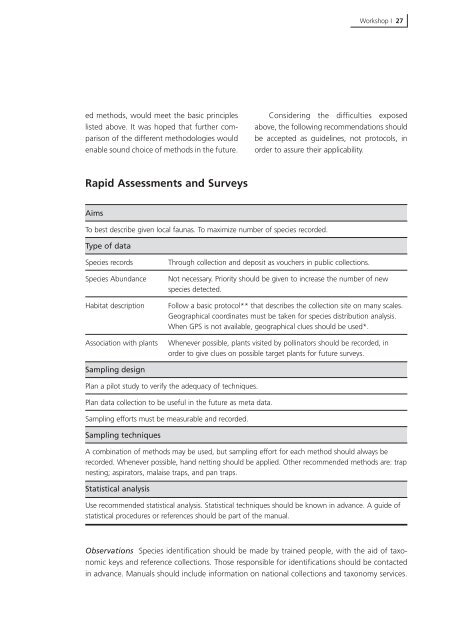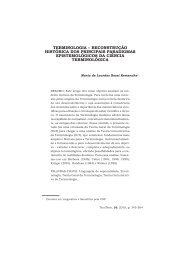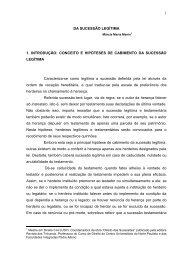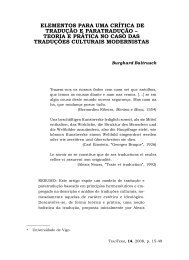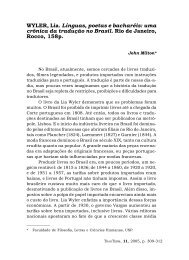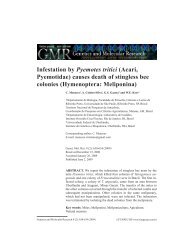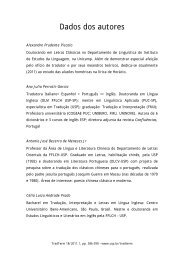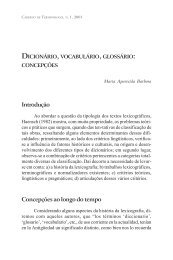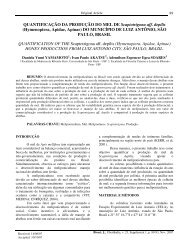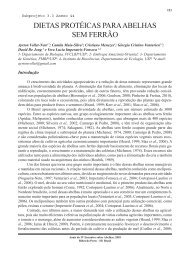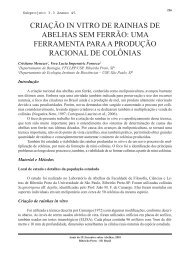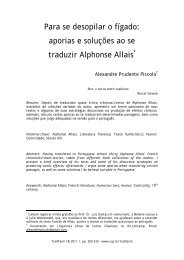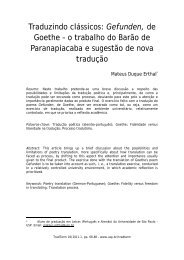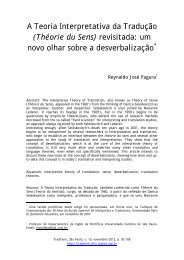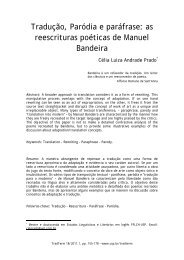Bees as pollinators in Brazil - USP
Bees as pollinators in Brazil - USP
Bees as pollinators in Brazil - USP
Create successful ePaper yourself
Turn your PDF publications into a flip-book with our unique Google optimized e-Paper software.
ed methods, would meet the b<strong>as</strong>ic pr<strong>in</strong>ciples<br />
listed above. It w<strong>as</strong> hoped that further comparison<br />
of the different methodologies would<br />
enable sound choice of methods <strong>in</strong> the future.<br />
Rapid Assessments and Surveys<br />
Aims<br />
To best describe given local faun<strong>as</strong>. To maximize number of species recorded.<br />
Type of data<br />
Workshop I 27<br />
Consider<strong>in</strong>g the difficulties exposed<br />
above, the follow<strong>in</strong>g recommendations should<br />
be accepted <strong>as</strong> guidel<strong>in</strong>es, not protocols, <strong>in</strong><br />
order to <strong>as</strong>sure their applicability.<br />
Species records Through collection and deposit <strong>as</strong> vouchers <strong>in</strong> public collections.<br />
Species Abundance Not necessary. Priority should be given to <strong>in</strong>cre<strong>as</strong>e the number of new<br />
species detected.<br />
Habitat description Follow a b<strong>as</strong>ic protocol** that describes the collection site on many scales.<br />
Geographical coord<strong>in</strong>ates must be taken for species distribution analysis.<br />
When GPS is not available, geographical clues should be used*.<br />
Association with plants Whenever possible, plants visited by <strong>poll<strong>in</strong>ators</strong> should be recorded, <strong>in</strong><br />
order to give clues on possible target plants for future surveys.<br />
Sampl<strong>in</strong>g design<br />
Plan a pilot study to verify the adequacy of techniques.<br />
Plan data collection to be useful <strong>in</strong> the future <strong>as</strong> meta data.<br />
Sampl<strong>in</strong>g efforts must be me<strong>as</strong>urable and recorded.<br />
Sampl<strong>in</strong>g techniques<br />
A comb<strong>in</strong>ation of methods may be used, but sampl<strong>in</strong>g effort for each method should always be<br />
recorded. Whenever possible, hand nett<strong>in</strong>g should be applied. Other recommended methods are: trap<br />
nest<strong>in</strong>g; <strong>as</strong>pirators, malaise traps, and pan traps.<br />
Statistical analysis<br />
Use recommended statistical analysis. Statistical techniques should be known <strong>in</strong> advance. A guide of<br />
statistical procedures or references should be part of the manual.<br />
Observations Species identification should be made by tra<strong>in</strong>ed people, with the aid of taxonomic<br />
keys and reference collections. Those responsible for identifications should be contacted<br />
<strong>in</strong> advance. Manuals should <strong>in</strong>clude <strong>in</strong>formation on national collections and taxonomy services.


